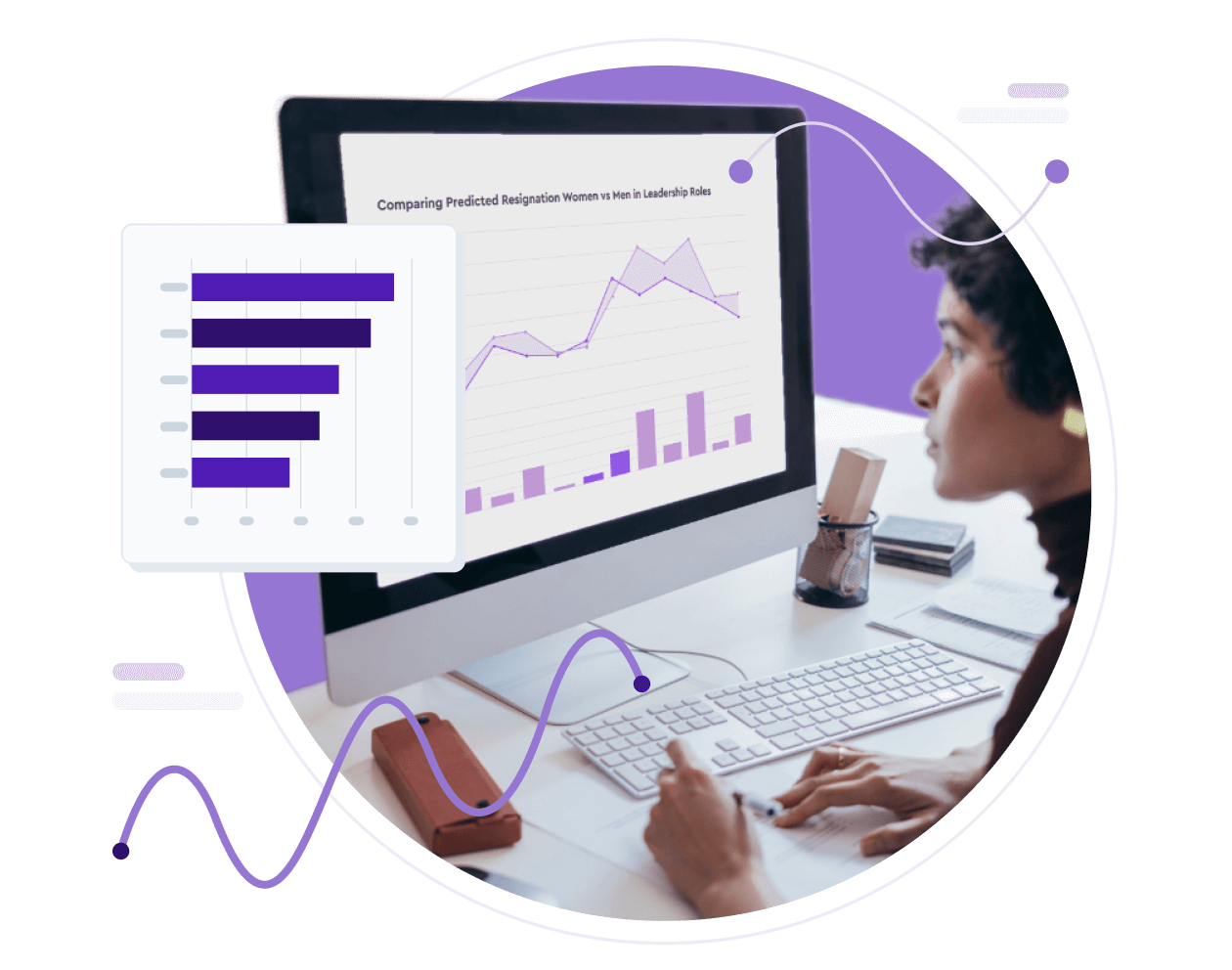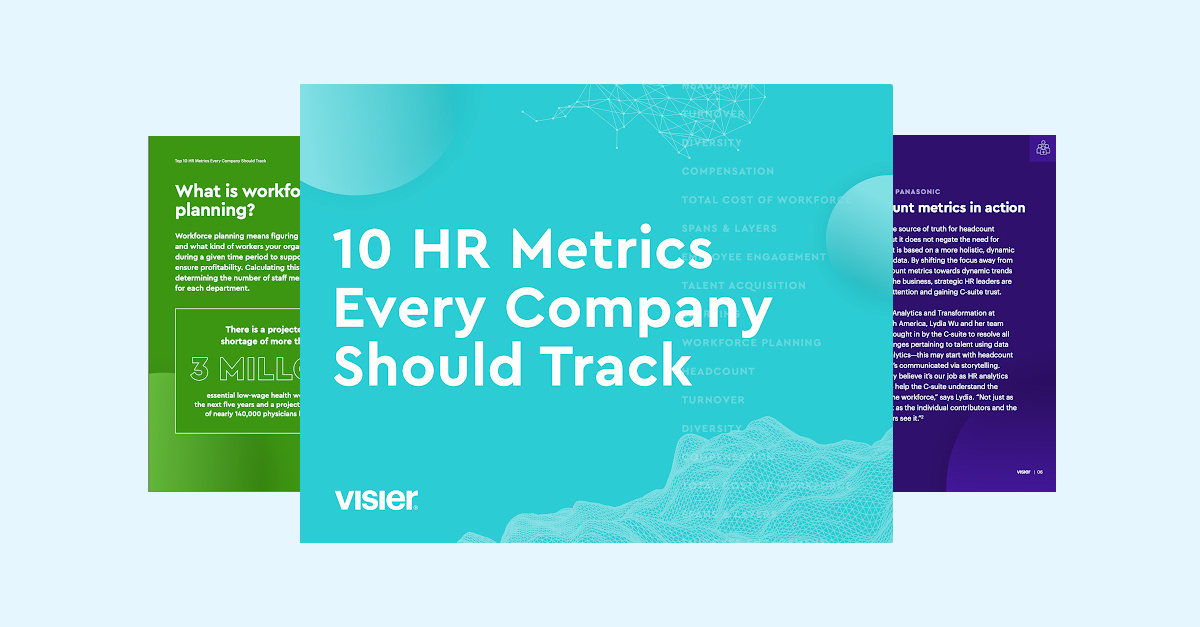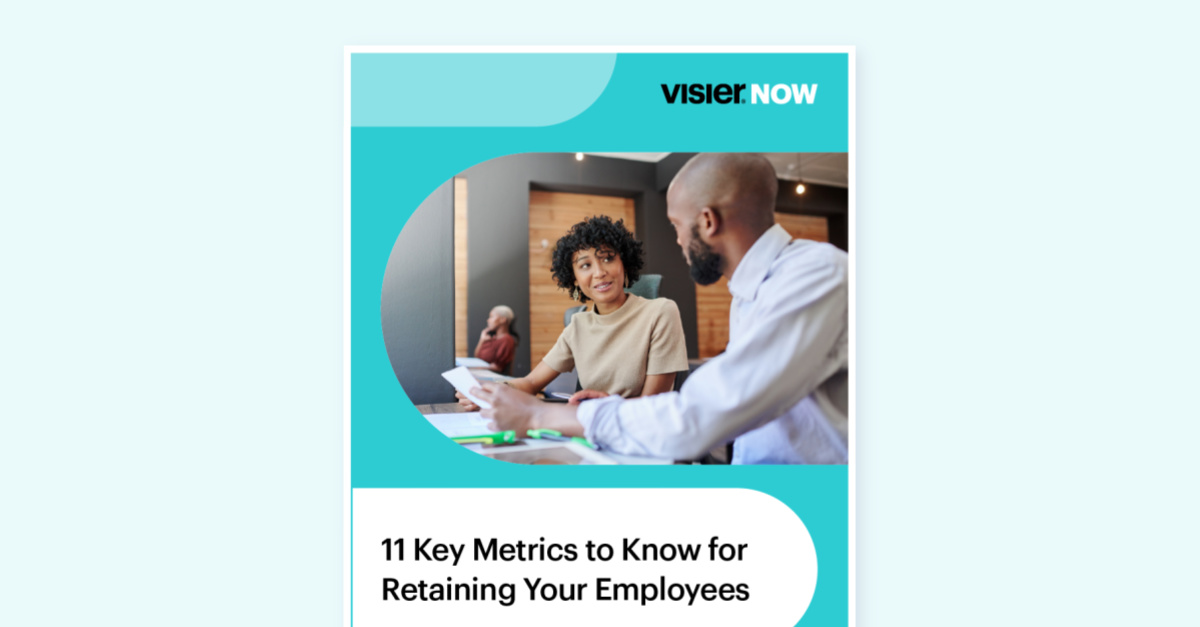HR ANALYTICS
What Is HR Analytics? Definition, Importance, and How To Use It
Finding and analyzing the right data using HR analytics helps companies make the right decisions for their workforce and organization. Read more.
Take a self-guided tour
Table of contents
What is HR analytics?Benefits of HR AnalyticsHow to get started with HR analytics3 examples of HR analytics in actionStart your HR analytics journeyWhat is HR analytics?
HR analytics is the process of collecting and analyzing HR data with the goal of improving talent and business outcomes. This allows HR leaders to objectively measure the impact of their strategies and processes to make better decisions that drive stronger performance, improve productivity, and create better employee experiences.
You will often hear the terms HR analytics, people analytics, and workforce analytics used interchangeably. While they’re similar, they’re not exactly the same thing.
HR analytics encompasses all data related to human resources. This includes things like the time to hire, cost to hire, training expenses, engagement, and more.
People analytics, on the other hand, deals with everything related to “people”, even individuals outside the company, such as customers.
Finally, workforce analytics looks at all the data related to the employees of a company, including freelancers, gig workers, consultants, and more.
The datafication of HR and the use of analytics have changed how we approach human resources in a company. Through HR analytics, you can interpret data patterns that you can later use in your decision-making process. With predictive HR analytics, you can spot potential issues before they impact your business and solve them quickly and effectively.

Benefits of HR Analytics
Using HR analytics and reporting can help you make better, more effective plans for the future, and improve business productivity and performance.
You’ll be able to set goals with a clear strategy in mind, knowing when, where, and why you need to take certain actions. Here are some of the major benefits of using HR analytics.
1. Improve retention strategies
Retention is key to business performance. High voluntary turnover rates often mean a loss of revenue. But effective retention strategies aren’t always easy to craft.
What makes your employees stay?
What is making them leave?
Is it money?
More development opportunities?
How’s engagement going?
HR analytics can help you answer all these questions and more. By analyzing various metrics related to your workforce, you can understand what is driving the resignations and what could make people stay.
2. Create an effective payroll system
Payroll systems play an important role in a company, but they often get unnecessarily complicated. For instance, you want to create a good merit increase program but might end up with an ineffective plan that leads to dissatisfaction and revenue loss.
Again, HR analytics can come to the rescue. By looking at metrics related to revenue, costs, productivity, and performance, you can create an effective system that boosts employee satisfaction, increases retention, and reduces your losses.
3. Improve the hiring process
Hiring is a crucial process for any company. It requires time and money, so you need to be as effective as possible. The goal is to get top talent with minimal hiring costs. Maximizing your offer acceptance rate is another key aspect of the hiring process.
HR analytics helps you look at metrics that matter and make correct decisions that will improve your talent acquisition process. These include, but are not limited to:
The cost to hire
The time to hire
The offer acceptance rate
Applicants per opening
Quality of hire
First-year attrition
Time to productivity
Recruiter performance metrics
All of the above metrics offer great insights into where your hiring process is working well, and where it can be improved. Track these metrics to find potential red flags and opportunities to boost your talent acquisition processes.

4. Better training programs
Training is another integral part of a company’s success. But, it can often be a costly undertaking with unclear ROI. If there are gaps in training outcomes and questions left unanswered about how impactful that investment was, costs can add up further down the line.
Employees can be less productive and make mistakes that can have a negative impact on your business. In these cases, the loss is compounded both by investment made into training, and the ineffectiveness of that training.
When running a training, make sure you collect various data to help you analyze the process and the impact it’s having on productivity. You can also run various surveys to see what employees feel about the training itself, and keep tabs on overall productivity and output before and after the training occurs.
5. Gain employee insights
What drives your employees? What makes them want to stay or leave? How engaged are they? All these and more are valid questions that can help you gain better employee insights, and take steps to improve their overall experience.
By using HR analytics, you’ll find these answers and more, thus allowing you to take steps to improve retention, engagement, and productivity.
You’ll understand what works and what doesn’t when it comes to motivating employees, and you’ll be able to create a more inclusive and safe working environment for everyone.

How to get started with HR analytics
How you start and conduct your HR analytics journey influences how successful the process will work for you. Luckily, by going through a few easy steps, you can create an effective system that will help you reach your goals quickly. Jonathan Ferrar calls it an eight step model for purposeful analytics. Here’s what it includes:
Step 1: Frame business questions
In short, ask yourself, why do you want to use HR analytics right now? What are you trying to achieve? What are the business goals? This will help you go further with clearly defined goals so that you don’t waste time and resources on things that aren’t important.Step 2: Build the hypothesis
You probably have certain issues in mind before you even begin the analysis process. What do you think the underlying cause is? How can you improve? Building a hypothesis will help you link the business questions with the data you will gather later.Step 3: Gather data
Now that you know what you’re trying to achieve and have your hypothesis, it is time to gather the data. Look at a variety of sources—both internal and external—to ensure the data is correct, objective, and relevant.Step 4: Conduct the analysis
Test your hypothesis by applying data and statistical analysis. Look for patterns and see if anything points to a specific problem or potential solution.Step 5: Reveal the insights
Present your findings to your colleagues, managers, and stakeholders. Make sure you use a language that is easy for everyone to understand and be ready to answer questions that may arise.Step 6: Determine recommendations
You have your findings. It is now time to determine the recommendations. What potential solutions do you see to the issues that were identified? What are the next steps going forward? Make sure that you take inputs shared by colleagues during your insights presentation into account to help fill in any blind spots that you and your team may have.Step 7: Get your point across
HR reporting often requires more than words. Use visualization, examples, and more to help everyone understand the findings and the next steps.Step 8: Implement and evaluate
The final steps in your HR analytics journey are implementation and evaluation. Look at all your findings and decide what you’ll implement and when. Later, evaluate your decisions to see if they were the correct ones and if the business improved as expected.
Gathering, analyzing, and acting upon insights from HR analytics should be an ongoing piece of your overall HR strategy. It’s likely that you will repeat the above process many times over, looking through different lenses to identify and solve specific problems within your organization.

3 examples of HR analytics in action
What does using HR analytics look like in practice? How can it really help? Here are three examples.
1. Improving the employee experience
A positive employee experience is crucial to productivity, performance, engagement, and retention. There are many strategies you can use to improve the employee experience. And most of them begin with HR metrics and analytics.
By gathering crucial data pertaining to things like absenteeism, performance, satisfaction, and more, you can spot problems before they impact the organization. You can also improve various processes to create a workplace that is psychologically safe, where everyone has equal opportunities, feels appreciated, and is motivated to perform their best.
2. Monitoring human capital risk (HCR)
What happens when someone leaves the company? Do you have proper succession mechanisms in place? What about your workforce in general? Do you have enough employees with all the skills your business currently needs? How’s attendance?
These questions, and more, help you monitor your human capital risk. By doing that, you ensure you’re never caught off guard when someone resigns and you always have people with the right skills available.
Monitoring HCR starts with HR metrics and analytics. Data related to turnover, absenteeism, or revenue per employee can give you an idea of your HCR and help you find the correct solutions for your business.
3. Planning and monitoring overtime
HR analytics can be useful in crisis situations as well. We can see such an example in the way the HR team of the City of Edmonton used HR analytics for workforce cost management during the Fort McMurray wildfire crisis.
When the wildfires broke out in May 2016, they needed all hands on deck. Many were working overtime, and the HR team needed a way to effectively track what was happening.
The city was already using HR analytics with Visier’s help prior to the fire. So when the crisis began, they already had their data to help them understand their workforce.
They were able to easily separate regular overtime from overtime because of the wildfire. Without HR analytics, the entire process would’ve been time-consuming and prone to errors. Instead, the team could quickly and effectively manage their resources to do their best work.

Start your HR analytics journey
A successful HR analytics journey begins with people. Use HR analytics to get a unified look at your workforce, understand how employees collaborate and learn, and what motivates them. One of the key steps to having a business that delivers the results you want is the talent acquisition process. But to improve it, you first need to look at what’s currently working and what isn’t.
Find and retain the right people
Use talent acquisition insights to evaluate your current recruitment process and identify candidates that have the highest chances of becoming top performers and improve recruiter efficiency, all while ensuring a positive employee experience.
We talked about improving retention strategies, a must for any company that wants to keep high performers. Use HR analytics to understand who is more likely to leave and why, what motivates people to stay, and how you can leverage retention and turnover indicators to your advantage.
Identify where employees can grow their career
Internal mobility solutions will help you create a mobility program where employees can grow and find new opportunities all the time. How does internal mobility impact your business? Which employees are best placed to upskill or even reskill?
By understanding a few key facts about your workforce, you can create a program that supports your business and your employees at the same time.
Effective planning is one of the major goals of HR analytics. But how can you make sure you’re tracking all the right data and taking the correct decisions regarding your workforce? With workforce planning, you can take action with precision and be confident in your plans.
Increase manager effectiveness
Good managers are a driving force that motivates and pushes people to reach their performance goals. HR metrics and analytics, when used correctly, can support you in finding your best leaders. Assess their performance by looking at various metrics that include retention, engagement, and productivity. Optimize your process to help your managers develop into genuine leaders who motivate and lead by example.

